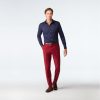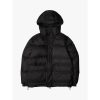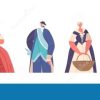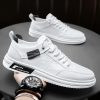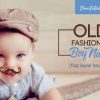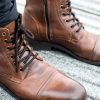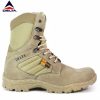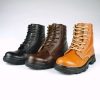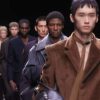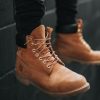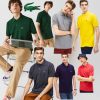Mens Fashion in 1912 A Gentlemans Style
Men’s Fashion in 1912
Men’s fashion in 1912 – The year 1912 marked a distinct era in men’s fashion, reflecting both the lingering elegance of the Edwardian period and the subtle shifts foreshadowing the stylistic changes of the coming decades. This period showcased a refined silhouette, meticulous attention to detail, and the enduring influence of military aesthetics. This exploration delves into the sartorial landscape of 1912, examining the defining characteristics of men’s clothing, accessories, and the underlying social contexts that shaped their style.
The Edwardian Gentleman: Defining the Silhouette
The Edwardian gentleman of 1912 presented a specific and easily recognizable silhouette. This style was characterized by a certain formality and attention to detail, reflecting the social hierarchies of the time.
The Typical Edwardian Silhouette
The typical silhouette featured a long, relatively straight coat, often reaching mid-calf or even longer for formal occasions. These coats were typically single- or double-breasted, with a high-waisted appearance created by the cut of the jacket and the high-rise trousers. Trousers were generally high-waisted and fairly straight, often with a slight taper towards the ankle. The overall effect was a long, lean, and somewhat formal look, emphasizing height and a straight posture.
Common Fabrics and Their Significance
The fabrics used in men’s clothing in 1912 were crucial to both the aesthetic and practical aspects of the garments. Wool, in its various forms (including tweed and worsted), was a dominant fabric, prized for its warmth, durability, and ability to hold a crease. Tweed, with its characteristic texture, was especially popular for country or sporting attire. Silk, while more expensive, was used for linings, cravats, and more formal accessories, adding a touch of luxury and sheen.
Suit Styles Across Social Classes
| Social Class | Typical Suit Components | Fabric Choices | Embellishments |
|---|---|---|---|
| Upper Class | Three-piece suit (jacket, waistcoat, trousers), often bespoke | Fine worsted wool, silk linings | Minimal embellishment; high-quality stitching and tailoring |
| Middle Class | Two-piece suit (jacket, trousers), ready-to-wear or tailored | Medium-weight wool, possibly tweed for less formal suits | Simple buttons, perhaps subtle patterns in the fabric |
| Working Class | Durable, practical work suits; often separates | Heavy-duty wool, denim, or cotton | Minimal embellishment; focus on functionality and durability |
Accessories and Details: Completing the Look
Accessories played a significant role in completing the overall look of a 1912 gentleman. These details provided a glimpse into his social standing and personal style.
Common Men’s Accessories
Hats were an essential part of the ensemble. Bowler hats, representing a more conservative and professional style, were widely worn, alongside the more stylish fedora. Neckwear included a variety of ties and cravats, reflecting personal taste and the formality of the occasion. Shoes were typically leather, often in black or brown, and often featuring brogueing or other decorative details.
Pocket Watches and Jewelry
Pocket watches were not simply timekeeping devices; they were status symbols, often crafted from precious metals and featuring intricate designs. Other jewelry, such as cufflinks and rings, were also used to express personal style and social standing. The craftsmanship of these items was often exquisite, reflecting the skill of the artisans who created them.
Types of Canes and Walking Sticks
- Malacca canes: Made from rattan, known for their lightness and durability.
- Wooden canes: Crafted from various hardwoods, often featuring elaborate carvings or handles.
- Umbrella canes: Combining a cane with a built-in umbrella, practical for inclement weather.
- Silver-topped canes: Indicating higher social status due to the use of precious metal.
The Influence of Military Style
Military uniforms had a significant impact on civilian men’s fashion in 1912. The structured tailoring and functional details of military attire were adapted and incorporated into everyday clothing.
Military Influence on Civilian Wear
The military influence was particularly evident in the structured tailoring of coats and jackets. Military-inspired details, such as epaulets, braid, and specific pocket placements, were adopted into civilian garments. The emphasis on functionality and durability in military uniforms also contributed to a trend toward more practical and hard-wearing clothing.
Military Uniforms and Fashion Trends
Different branches of the military had distinct uniform styles, each influencing civilian fashion in unique ways. The navy’s emphasis on dark blue and crisp tailoring, for example, influenced the design of civilian suits and overcoats. The army’s use of khaki and sturdy fabrics impacted the development of outdoor and sporting attire.
Military-Inspired Garments and Accessories, Men’s fashion in 1912
| Military-Inspired Garment/Accessory | Military Origin | Civilian Adaptation |
|---|---|---|
| Trench Coat | British Army | Stylish and practical overcoat for civilian use |
| Sam Browne Belt | Military officers | Adopted as a fashionable accessory |
| Khaki Trousers | Army uniforms | Popular choice for outdoor and sporting activities |
Undergarments and Layers: Constructing the Ensemble
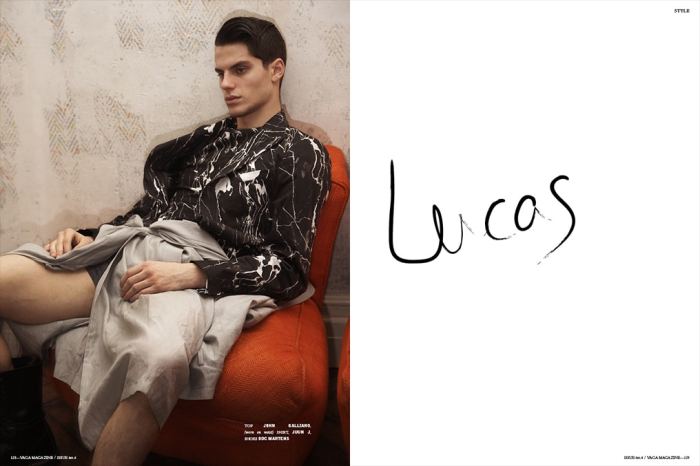
Source: vagazine.com
The layering of clothing was an essential aspect of men’s fashion in 1912. This practice served both practical and aesthetic purposes, allowing for adjustments to suit the weather and occasion.
Men’s Undergarments
Undergarments formed the foundation of the ensemble. These included long underwear (often wool or cotton), undershirts, and suspenders (braces) to hold up trousers. The quality and fabric of these undergarments varied according to social class, with finer materials being used by wealthier individuals.
Layering Techniques and Rationale
Layering provided warmth in colder months and allowed for adjustments to formality. A typical layered outfit might include long underwear, an undershirt, a waistcoat, a jacket, and an overcoat. The removal of layers could transform a formal ensemble into a more casual one.
Layering for Different Levels of Formality
Here are examples of how different layers combined to create different levels of formality:
Long underwear + Undershirt + Suit + Overcoat: Formal attire for colder weather.Undershirt + Shirt + Waistcoat + Jacket: Business or semi-formal attire.Undershirt + Shirt + Trousers: Casual attire.
Illustrative Examples: Visualizing 1912 Men’s Fashion
Two fictional examples illustrate the diversity of men’s fashion in 1912, reflecting differences in social class and lifestyle.
An Upper-Class Gentleman at a Formal Event
Our fictional upper-class gentleman, attending a formal ball, would be impeccably dressed in a bespoke three-piece suit of dark grey worsted wool. The jacket would be single-breasted, with a high collar and carefully tailored lapels. A crisp white shirt with detachable collar and cufflinks, a silk cravat, and a polished pair of black leather oxfords would complete his attire.
A top hat would be essential, and a pocket watch with a fine chain would add a touch of elegance.
A Working-Class Man’s Attire
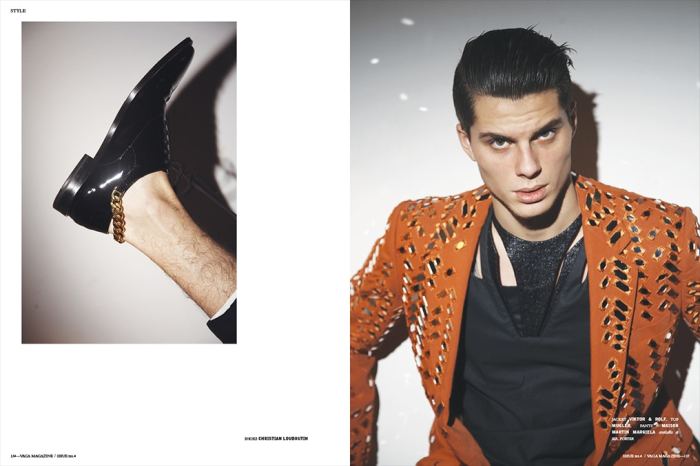
Source: vagazine.com
Our fictional working-class man, a factory worker, would wear sturdy, practical clothing suitable for manual labor. His attire might consist of heavy-duty denim trousers, a durable cotton shirt, and a strong, possibly patched, work jacket. His footwear would be sturdy leather boots, designed for comfort and protection. A simple cap would shield his head from the elements.
A 1912 Men’s Fashion Advertisement
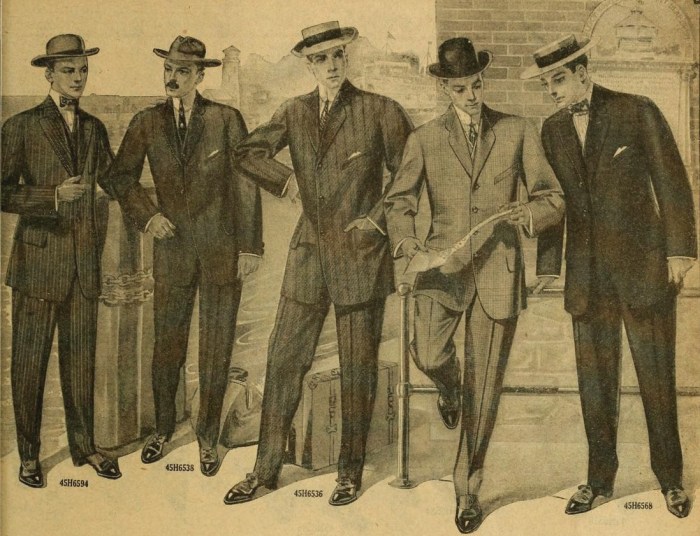
Source: vintagedancer.com
Men’s fashion in 1912 was characterized by tailored suits and formal wear. The rise of practical workwear, however, introduced a more casual element, though far removed from today’s styles. A stark contrast to the three-piece suits of the era can be seen in the modern evolution of denim, exemplified by the contemporary options available in black jeans men fashion.
This showcases how drastically men’s fashion has changed over the century, moving from stiff formality to the versatile choices of today.
Imagine a black and white advertisement featuring a dapper gentleman, impeccably dressed in a dark suit, standing proudly before a grand building. The background might depict a bustling city street, with elegant carriages and well-dressed pedestrians. The advertisement would emphasize the quality and style of the clothing, using elegant typography and a sophisticated layout to attract the discerning male consumer.
The overall aesthetic would be one of refinement, sophistication, and timeless style.
Detailed FAQs: Men’s Fashion In 1912
What were common hairstyles for men in 1912?
Short, neatly groomed hair was prevalent, often parted on the side. Mustaches were popular, though full beards were less common than in previous decades.
Were there any significant fashion trends specific to certain regions?
While the overall style was consistent across much of the Western world, regional variations existed, particularly in the choice of fabrics and the specific styles of hats and coats.
How did men’s fashion change in the years immediately following 1912?
The outbreak of World War I significantly impacted menswear, leading to more utilitarian and simplified styles. The focus shifted from elaborate detailing to practicality and functionality.



